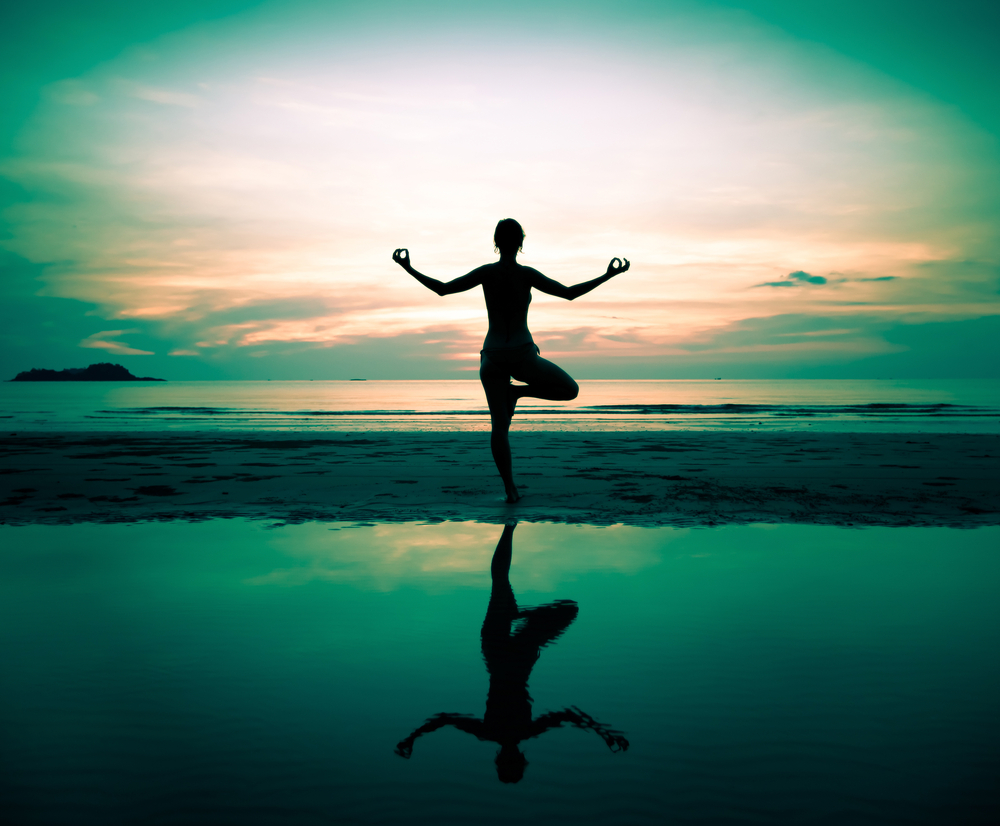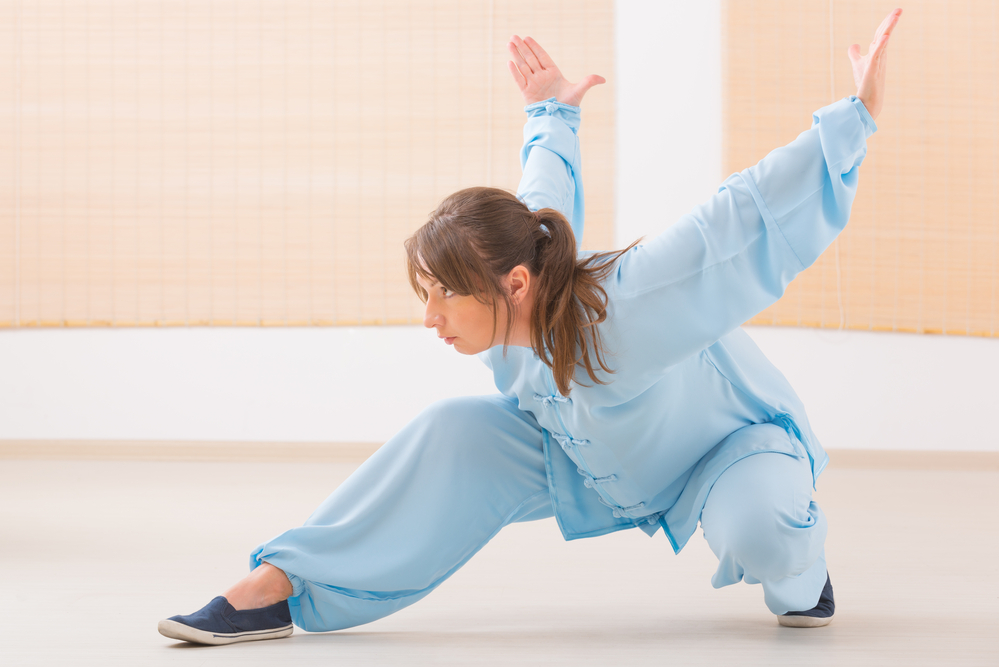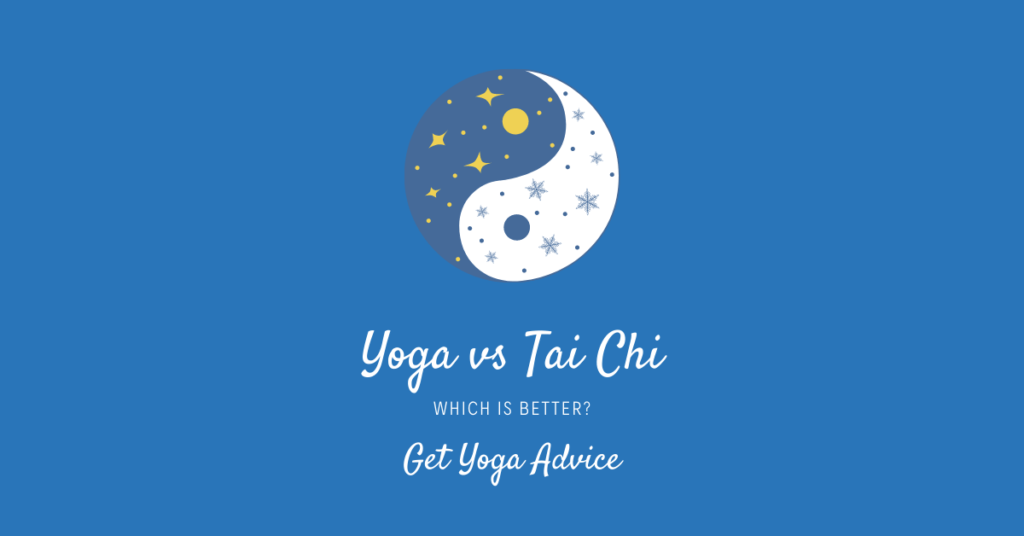When it comes to ‘Yoga vs Tai Chi‘ which of the two is better is a question that more people are asking as they face today’s unprecedented levels of daily stress and anxiety.
More people are reporting chronic stress than ever before. The CDC recently surveyed Americans and found that around one in three experience feelings of anxiety and depression.
It’s well known that exercise has a powerful effect on not just your mood but your general resilience against outside stress. And, certain exercise modalities, such as yoga and Tai Chi, are especially well-known for their calming and grounding nature.
If you’re like most people, you don’t have time to develop expertise in a ton of different disciplines. So, if you had to choose, how do you weigh up yoga vs Tai Chi?
Contents
Yoga vs Tai Chi: How Do These Two Compare?
Some experts describe yoga and Tai Chi as cousins — related practices that also have many differences. Both Tai Chi and yoga have ideas of balance and energy at their center.
The breath is the foundation of both Tai Chi and yoga, with both having practitioners focus on deep, even breathing. They are both considered types of moving meditation, and, as such, both have proven records for improved mindfulness and better mental state. Also, both have their origins in Eastern philosophy and religion.
When you consider all those similarities, it can be hard to see what distinguishes them. However, there are many marked differences that may make one or the other the better pick for you.
Yoga is a practice that is thousands of years old and owes some of its earliest tenets and traditions to Hinduism. Tai Chi is most likely far newer, perhaps a few hundred years old. It is descended from martial arts that include Qigong and Baguazhang and rooted in religions that include Buddhism and Taoism, as well as Confucian philosophy.
Reasons to Choose Yoga

The word “yoga” comes from a word that means “to yoke together.” Yoga’s goal is to join the body and mind harmoniously. The practice of yoga involves holding a series of poses. There are many different styles of yoga, with exercises that range from gentle stretching to vigorous, difficult workouts.
Yoga has exploded in popularity over the past decade. Most cities have multiple yoga classes to choose from, with options ranging from classes by donation offered in public parks up to private or semi-private classes in high-end studios.
You can also find a wealth of resources online for learning yoga, which include YouTube channels, videos on Amazon Prime, and even popular TikTok creators.
Yoga provides health and wellness benefits that include improved balance, strength, coordination and flexibility. People who practice yoga regularly report that it helps with issues that include insomnia and chronic pain. It is also associated with lower stress levels and better management of stress, depression, and anxiety.
One of the potential downsides with yoga is the risk of injury. While nearly all yogic poses can be modified, novices run the risk of injury if they take on a pose that is outside their abilities or execute a position incorrectly.
Why Tai Chi Might Be Better for You

Tai Chi is, by nature, a low-impact, slow-motion exercise. Tai Chi routines involve slow, circular movements. A Tai Chi session can range from a dozen or so movements over a short period of time up to moving meditations that involve 100 movements or more.
Tai Chi, while being the newer practice worldwide, has a long history of popularity in the US. However, the form never reached the level of popularity that yoga currently enjoys. Most cities have options for Tai Chi classes, but there will be fewer choices than yoga practitioners have.
Tai Chi’s audiences tend to be older, while yoga has adherents of all ages. Also, as it is a low impact exercise, it’s a great pick for beginners of all fitness levels, and it can be adapted for people no matter what their state of health.
Tai Chi is especially good at improving balance, increasing focus and mindfulness, and helping improve cognitive function. In fact, studies have shown that elderly individuals who add Tai Chi to their daily routines have better brain function than those who don’t.
Tai Chi provides moderate improvements in cardiovascular health, muscle strength, and coordination. It is also linked with improved digestive function.
Practitioners say that it is excellent for pain relief. Because it is a gentle exercise, the risk of injury is low. The mellowness of the exercise also means that beginning Tai Chi practitioners have little reason or anxiety before trying out their first class.
One of the downsides of Tai Chi, however, is that it is not designed to be an intense workout. If you are looking for an exercise that will help build strength or one with strong cardio benefits, you may wish to augment your routine with other exercises or choose one of the more intense forms of yoga instead.
The Final Word on Yoga vs Tai Chi
If your primary goal is mental balance and better general health, either of these practices could be a good fit for you. Try a few classes of each to see whether you prefer Tai Chi’s gentle, smooth movement or yoga’s stretches and poses.
If you are mostly looking for minor health improvements, you can’t go wrong with Tai Chi. If you want to significantly improve flexibility and strength, yoga could be the better choice.
By focusing on what you want to get out of your practice, you can decide which one will work better for you.



